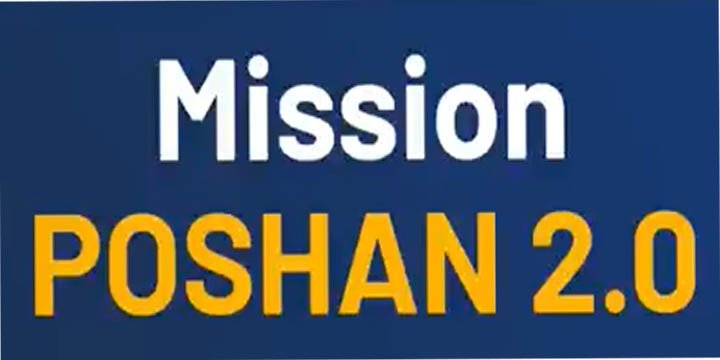HEALTHCARE IN INDIA
MISSION POSHAN 2.0

- Mission Poshan 2.0 is a strategic shift and an integrated approach that aims to address malnutrition among vulnerable groups (children, adolescent girls, pregnant women, and lactating mothers) through various programs under the umbrella of Saksham Anganwadi and POSHAN 2.0.
- The scheme has been approved by the Government of India for implementation during the 15th Finance Commission period 202l-22 to 2025-26.
KEY FOCUS AREAS
- Maternal Nutrition: Emphasis on improving the nutrition of pregnant women.
- Infant and Young Child Feeding (IYCF) Norms: Promoting breastfeeding and appropriate complementary feeding.
- Treatment of MAM and SAM: Addressing Moderate Acute Malnutrition (MAM) and Severe Acute Malnutrition (SAM).
- Promoting Wellness through AYUSH: Incorporating traditional Indian knowledge on health and wellness.
- Technology Integration: The use of the Poshan Tracker, an ICT-enabled platform, helps monitor nutritional provisioning and ensure the timely delivery of services.
DIETARY STRATEGIES
- Diet Diversity: Encouraging a balanced diet by including a variety of foods in the diet.
- Use of Millets: Millets are promoted for their high nutritional content, helping address issues like anemia and micronutrient deficiencies in women and children. These are being used in hot cooked meals and take-home rations for children, pregnant women, and lactating mothers.
- Fortified Rice: The scheme now ensures the allocation of only fortified rice in States/UTs under the Supplementary Nutrition Programme.
PROGRESS & IMPACT
NFHS Reports (2015-16 to 2019-21):
The National Family Health Survey (NFHS) provides a comprehensive overview of the nutritional status of children and women in India. A comparison of data from NFHS-4 (2015-16) and NFHS-5 (2019-21) reveals the following improvements:
- Stunting (Height-for-Age): Reduced from 38.4% (NFHS-4) to 35.5% (NFHS-5).
- Wasting (Weight-for-Height): Decreased from 21.0% (NFHS-4) to 19.3% (NFHS-5).
- Underweight (Weight-for-Age): Declined from 35.8% (NFHS-4) to 32.1% (NFHS-5).
- Underweight Women (Age 15-49): Reduced from 22.9% (NFHS-4) to 18.7% (NFHS-5).
These improvements indicate a positive trend in addressing child malnutrition and women’s undernutrition, largely attributed to the various nutrition-focused government schemes.
Note: Connect with Vajirao & Reddy Institute to keep yourself updated with latest UPSC Current Affairs in English.
Note: We upload Current Affairs Except Sunday.

